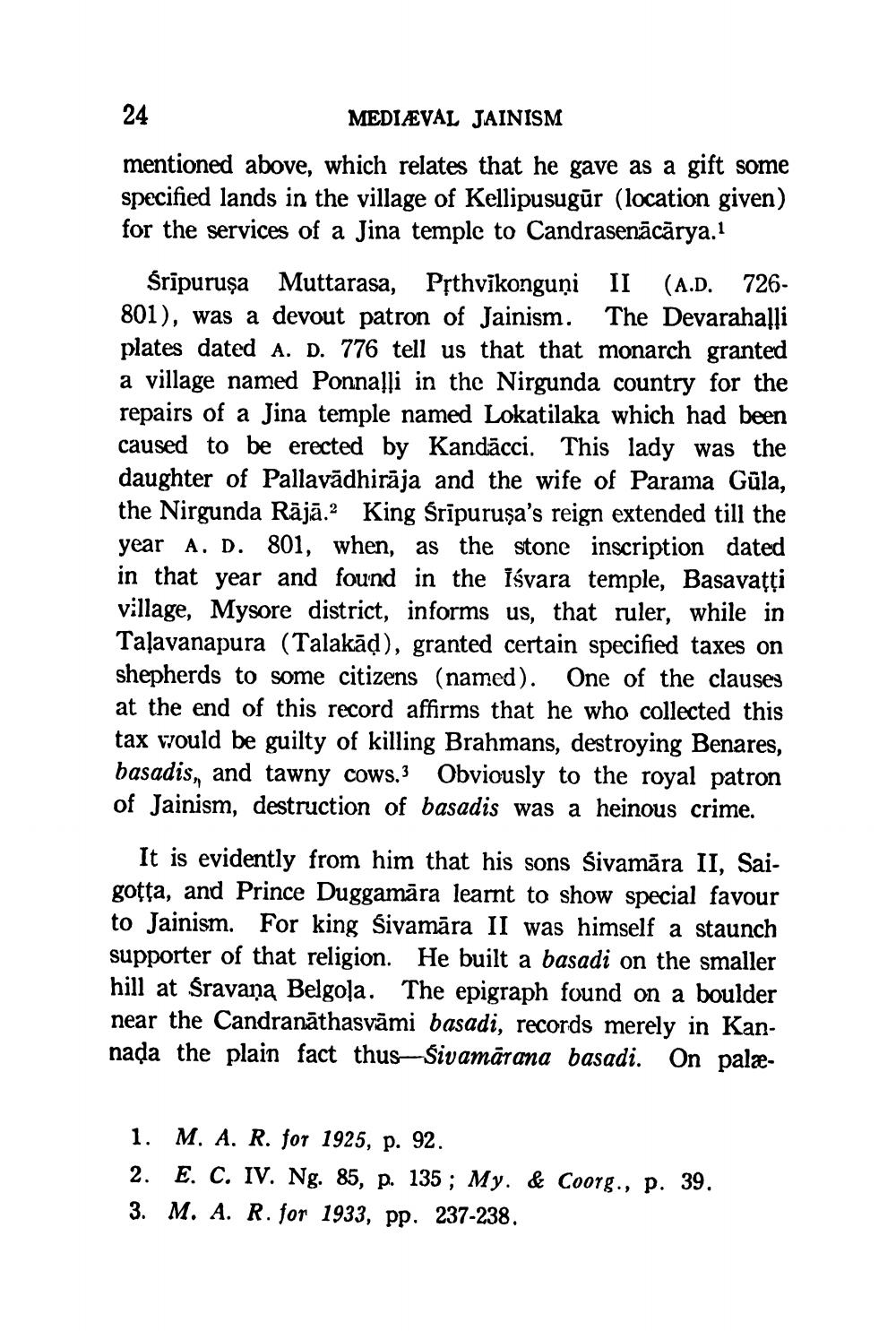________________
24
MEDIEVAL JAINISM
mentioned above, which relates that he gave as a gift some specified lands in the village of Kellipusugur (location given) for the services of a Jina temple to Candrasenācārya.1
Śrīpuruşa Muttarasa, Pṛthvikonguni II (A.D. 726801), was a devout patron of Jainism. The Devarahalli plates dated A. D. 776 tell us that that monarch granted a village named Ponnalli in the Nirgunda country for the repairs of a Jina temple named Lokatilaka which had been caused to be erected by Kandacci. This lady was the daughter of Pallavādhiraja and the wife of Parama Gūla, the Nirgunda Rājā.2 King Śrīpuruşa's reign extended till the year A. D. 801, when, as the stone inscription dated in that year and found in the Isvara temple, Basavaṭṭi village, Mysore district, informs us, that ruler, while in Talavanapura (Talakāḍ), granted certain specified taxes on shepherds to some citizens (named). One of the clauses at the end of this record affirms that he who collected this tax would be guilty of killing Brahmans, destroying Benares, basadis, and tawny cows.3 Obviously to the royal patron of Jainism, destruction of basadis was a heinous crime.
It is evidently from him that his sons Sivamāra II, Saigotta, and Prince Duggamara learnt to show special favour to Jainism. For king Sivamāra II was himself a staunch supporter of that religion. He built a basadi on the smaller hill at Sravana Belgola. The epigraph found on a boulder near the Candranāthasvāmi basadi, records merely in Kannada the plain fact thus-Sivamarana basadi. On palæ
1. M. A. R. for 1925, p. 92.
2. E. C. IV. Ng. 85, p. 135; My. & Coorg., p. 39. 3. M. A. R. for 1933, pp. 237-238.




